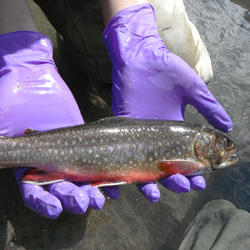Are Tumors in Wild Fish Harvested in the Great Lakes Region Related to Contaminants in Water Resources?
Active
By Environmental Health Program
September 24, 2018
A body surface tumor diagnosed as a squamous cell carcinoma
white sucker (Catostomus commersonii)
white sucker (Catostomus commersonii)
A USGS scientist collecting a liver tissue sample from a white sucker
(Catostomus commersonii) from a river in the Great Lakes area
(Catostomus commersonii) from a river in the Great Lakes area



